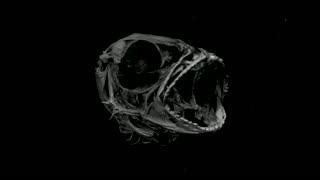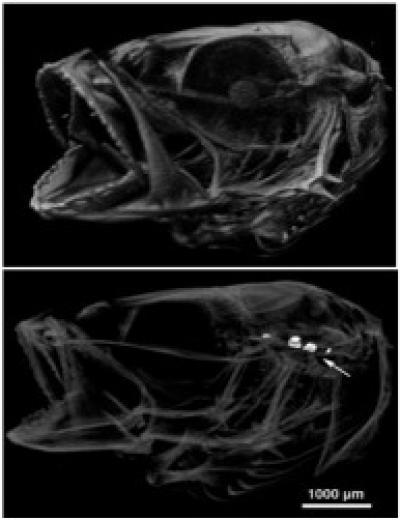"Increased hearing sensitivity could improve a fish's ability to use sound for navigation, predator avoidance, and communication. However, it could also increase their sensitivity to common background noises, which may disrupt the detection of more useful auditory information," said Bignami, who recently completed his PhD in Marine Biology and Fisheries at UM.
The study, a collaboration between UM and NOAA's Ocean Acidification Program at the Atlantic Oceanographic and Meteorological Laboratory in Miami, is the first to use micro-CT technology to examine otoliths while still inside the heads of the larval fish.
"This effect of ocean acidification represents a significant change to a key sensory system in fish. Although the ultimate ecological consequences still need to be determined, there is the potential for serious impact on important processes such as larval fish recruitment and fisheries replenishment in this species and perhaps other critical fisheries," Bignami added.

In a new study published in the Proceedings of the National Academy of Sciences, University of Miami researcher Sean Bignami, along with NOAA scientists Ian Enochs, Derek Manzello, and UM professors Su Sponaugle and Robert Cowen, report stunning new insight into the potential effects of acidification on the sensory function of larval cobia. The team was the first to utilize 3-D X-rays (micro-CT scans) similar to what a patient might receive at a hospital, to determine that fish raised in low-pH seawater, simulating future conditions, have larger and more dense otoliths (ear stones) than those from higher-pH seawater. Otoliths are distinct calcium carbonate structures within the inner ear of fishes that are used for hearing and balance. The changes resulted in up to a 58 percent increase in otolith mass, and when tested in a mathematical model of otolith function, showed a potential increase in hearing sensitivity and up to a 50 percent increase in hearing range. These findings indicate the potential for significant impact on a key sensory system in fish, with important implications for larval fish recruitment and fisheries replenishment.
(Photo Credit: Sean Bignami - UM/RSMAS)

This is micro-CT imagery of a cobia larva head that has been filtered to view the entire skull (top image) and the more dense otolith (ear stone) structures (bottom image). Similar 3-D images were used by researchers to obtain the first measurements larval fish otoliths while still inside the skull.
(Photo Credit: UM/RSMAS)
Source: University of Miami Rosenstiel School of Marine & Atmospheric Science